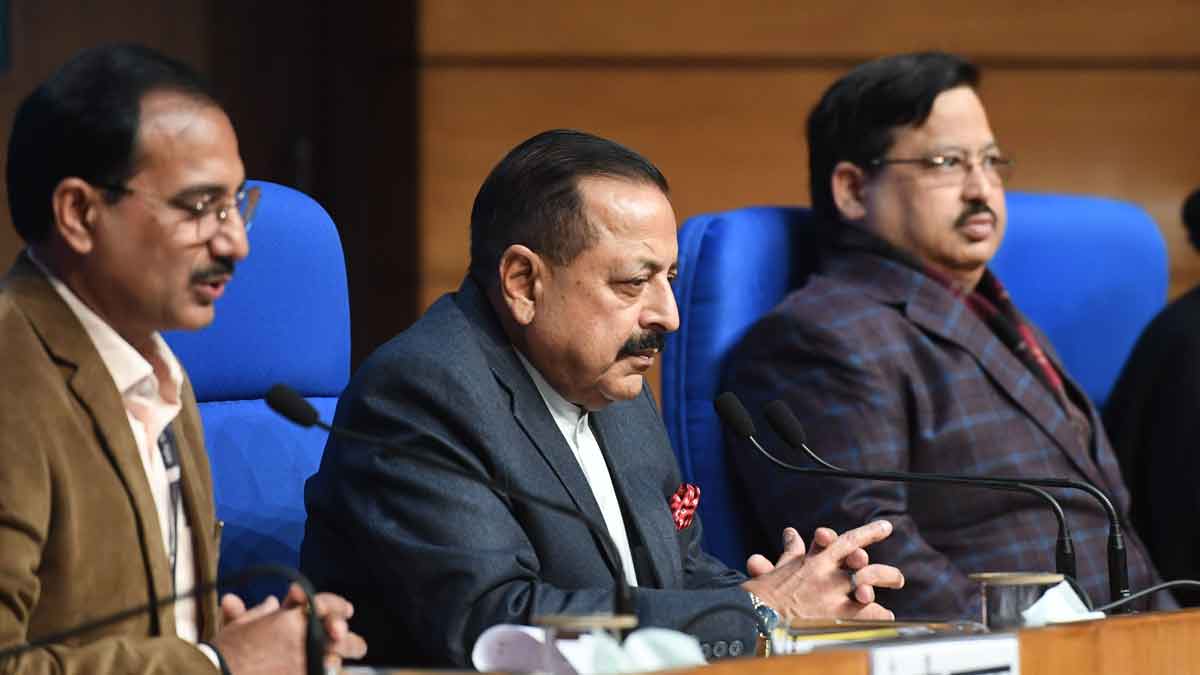This year, the Indian Space Research Organisation (ISRO) carried out a total of 15 missions, showcasing significant strides in both “demonstrational” and “developmental” projects. Among these were the commercial launch of the GSAT-N2 satellite, executed by NewSpace India Limited (NSIL), and the groundbreaking launch of the Agnibaan rocket, developed by the aerospace start-up AgniKul Cosmos. Following the successful launch of the PSLV-C60 rocket from Sriharikota on December 30, Union Minister of State for PMO, Atomic Energy and Space Dr Jitendra Singh hailed the efforts in the space sector as he fondly recalled the completion of the first halo orbit by Aditya L-1, a spacecraft designed for India’s first solar mission.
The Union Minister further discussed the importance of AI and technology in the space sector. Vyommitra, a female humanoid robot designed by the ISRO, is built to serve on the Gaganyaan spacecraft which will carry the crew into space and back to earth.
“Huge amount of public interest generated by the space achievements has sparked awareness and enthusiasm among the common citizens,” Dr Singh pointed out. He noted that the space industry has also generated awareness about biotechnology, CSIR activities and other branches of sciences.
Also read
- From launch of NVS-02 satellite and Gaganyaan to joint NISAR mission, ISRO has a busy year ahead
- India becomes 4th nation to achieve space docking as ISRO spacecraft gets injected into right orbit
- Space docking mission: PSLV-C60 carrying 2 spacecraft lifts off from Sriharikota
- Explained: Why is ISRO’s SpaDeX mission crucial for India's ambitious space station programme
Pressing upon the cost-effectiveness of the SpaDeX mission, the Union Minister mentioned both satellites, Chaser and Target, “cost merely about Rs 125 crores each”. “And the launch vehicle cost around Rs 250 crores — hardly making a total of Rs 375 crores which is a very small fraction of similar missions undertaken by agencies like NASA and the European Space Agency (ESA),” he added.
“The value addition to India’s economy will come from the unexplored or the underexplored sectors, which includes the space sector,” Dr Singh emphasized. He further attributed the flourishing space economy to “increased participation” and eradication of the “demarcation between the private and the public sector”. According to him, the other aspect is the revenue boost from foreign satellite launches.
According to him, the success of the mission, however, wasn't a solo effort. "This mission was also accomplished in collaboration with several other institutions across the country, such as the Tata Institute, the IITs, the Indian Institute of Sciences, and of course, it was ISRO which was doing the launching and carrying out the core work," Dr Singh said.
Dr Singh discussed the establishment of India’s second spaceport in Thoothukudi, Tamil Nadu, with ISRO preparing to build the new launch site in Kulasekarapattinam, a coastal village within the district.
“The year 2024 has been remarkable, not only for the ISRO but the entire space sector, and it has laid the foundation of the technological space exploration program in the long run,” said Rajeev Jaiswal, associate director at ISRO’s earth observation division.
SpaDeX or Space Docking Experiment is a twin satellite mission to demonstrate ‘rendezvous’ and ‘docking’ between these satellites. In space, ‘rendezvous’ refers to a series of orbital manoeuvres designed to align two spacecraft in the same orbit, whereas their subsequent joining is termed ‘docking’. SpaDeX — involving two satellites, SDX01 (Chaser) and SDX02 (Target) — is a precursor technology demonstration mission for the space docking missions planned to be undertaken in future Gaganyaan and Chandrayaan missions.
The project is considered a stepping stone toward Space Vision 2047, which envisions India as a leading space power with the launching of Bharatiya Antariksha Station (BAS) by 2035, and achieving a moon landing with indigenous technologies by 2040. Other projects under Space Vision 2047 are — Chandrayaan-4, the launch of a low-cost, reusable Next Generation Launch Vehicle (NGLV), the Venus Orbiter Mission and other Gaganyaan follow-on programmes.



